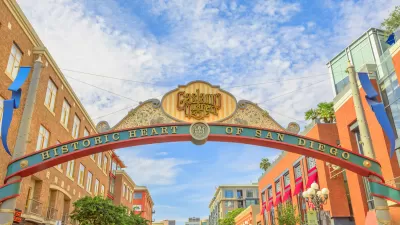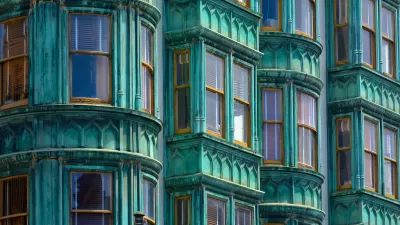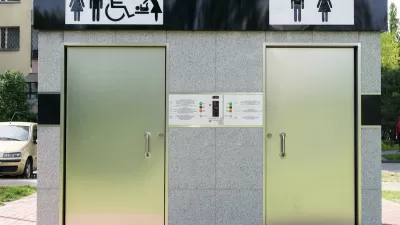Historic buildings add character to neighborhoods. When torn down, pieces of history are also stripped from the city; when restored, they can act as catalysts for revitalization.
There’s a distinct difference between the design of the high-rise office building that sits at 1100 New York Avenue NW in Washington, D.C. and its pavilion entrance. While the first is modern, the second has a 1930’s, art-deco feel. That’s because the entrance once operated as the Greyhound Bus company’s Super Terminal, which was completed in 1940.
While D.C. transplants may be more familiar with the more modern swath of New York Ave.—which includes the new City Center development with high-end retail stores and restaurants—longtime Washingtonians can recall the major transportation hub on New York Avenue. In fact, many still reference the site as “the old Greyhound terminal,” says Peter Sefton, chair of the DC Preservation League’s (DCPL) Landmark Committee. “People say it all the time—it’s a place-making type of landmark. It’s not a bus terminal anymore but it still has that identity.”
Lists such as the National Register of Historic Places and the D.C. Inventory of Historic Sites were formed to preserve landmark buildings. Properties on the list are acknowledged and protected from being completely demolished because of their cultural significance.
Structures like the former Greyhound terminal add character to neighborhoods, especially during a time when cookie-cutter hotels, apartment buildings and pubs spring up throughout the city. When torn down, pieces of history are also stripped from the city; when restored, they can act as catalysts for neighborhood revitalization.
When the Atlas Theater on H St. Northeast was transformed into the Atlas Performing Arts Center in 2006, the surrounding commercial district was deserted. Today, the corridor that bustles with bars and retails shops is often referred to as the Atlas District.
FULL STORY: DC's historic buildings can anchor a neighborhood, but some are in jeopardy

Alabama: Trump Terminates Settlements for Black Communities Harmed By Raw Sewage
Trump deemed the landmark civil rights agreement “illegal DEI and environmental justice policy.”

Study: Maui’s Plan to Convert Vacation Rentals to Long-Term Housing Could Cause Nearly $1 Billion Economic Loss
The plan would reduce visitor accommodation by 25% resulting in 1,900 jobs lost.

Planetizen Federal Action Tracker
A weekly monitor of how Trump’s orders and actions are impacting planners and planning in America.

Wind Energy on the Rise Despite Federal Policy Reversal
The Trump administration is revoking federal support for renewable energy, but demand for new projects continues unabated.

Passengers Flock to Caltrain After Electrification
The new electric trains are running faster and more reliably, leading to strong ridership growth on the Bay Area rail system.

Texas Churches Rally Behind ‘Yes in God’s Back Yard’ Legislation
Religious leaders want the state to reduce zoning regulations to streamline leasing church-owned land to housing developers.
Urban Design for Planners 1: Software Tools
This six-course series explores essential urban design concepts using open source software and equips planners with the tools they need to participate fully in the urban design process.
Planning for Universal Design
Learn the tools for implementing Universal Design in planning regulations.
Caltrans
Smith Gee Studio
Institute for Housing and Urban Development Studies (IHS)
City of Grandview
Harvard GSD Executive Education
Toledo-Lucas County Plan Commissions
Salt Lake City
NYU Wagner Graduate School of Public Service





























